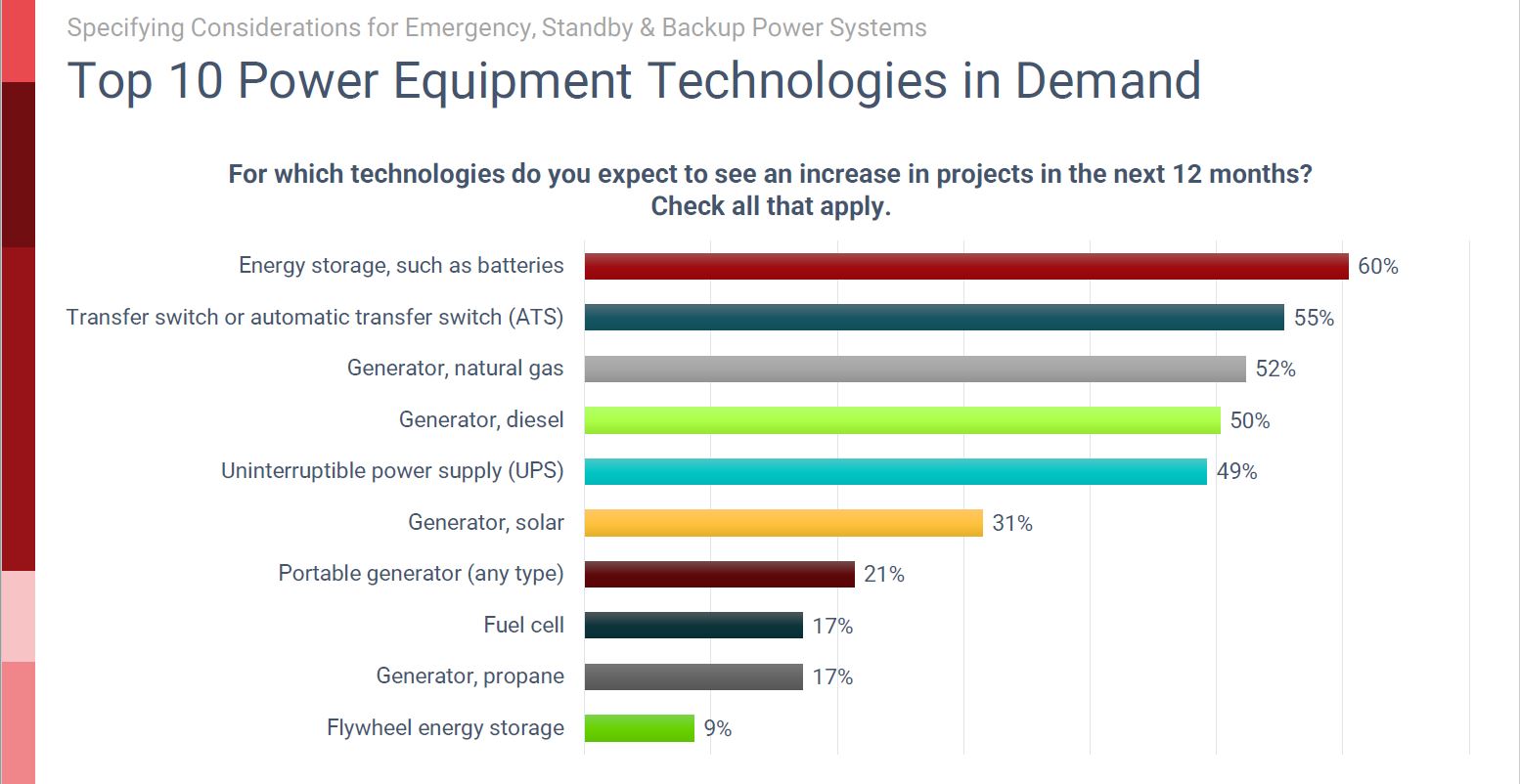Research: Why and how to specify emergency, standby and backup power systems
Emergency, standby and backup power systems are key to many engineers’ building designs
The Emergency, Standby & Backup Power Systems Study was conducted by Consulting-Specifying Engineer to identify the buying and specifying habits of building professionals involving emergency, standby and backup power products.
When asked in late May and early June 2022, 197 people participated. The sample for this study was selected from qualified subscribers of Consulting-Specifying Engineer with valid email addresses who personally select, specify or design power systems in new construction or retrofit projects.
The majority of respondents were engineers (53%) and about a quarter (23%) are senior administration or upper management staff. Slightly more than half of respondents work for consulting engineering firms.
Participants in this study forecast what technologies they expect see more of in the next 12 months. The largest group (60%) expect to see an increase in projects that include energy storage, such as batteries. Other technologies expected to increase include transfer switches or automatic transfer switches, natural gas generators and diesel generators.

Survey respondents expect to see several technologies incorporated into projects in the near future. Courtesy: Consulting-Specifying Engineer
Smart power systems
The survey touched on smart emergency, standby and backup power systems, which are important in many buildings, especially as it relates to COVID-19. In general, a smart building project leverages data from one historically siloed system to another siloed system to create new and useful insights, savings, efficiencies and other use cases. If an organization’s business and building’s systems become integrated, the smart buildings project will create the greatest economic impact.
Fifty-four percent of respondents specify smart emergency, standby and backup power equipment; 31% have been specifying smart systems more in the past 18 months than before the COVID-19 pandemic.
During the COVID-19 pandemic, product availability from the manufacturer has increased substantially in importance for smart power systems; other features that have grown in importance include improved energy efficiency, interconnectivity with other systems and more precision in the power systems.
Finding the right emergency, standby and backup power info
When researching and specifying emergency, standby and backup power systems, the average engineer spends 29% of their time researching vendors on their own, 23% evaluating vendors after speaking with their representatives, 18% sending proposal-like requests for information and 30% writing the specification.
The research and evaluation process is typically four months, on average, before engineers specify a new (i.e., never specified) emergency, standby and backup power system. Ten percent of respondents indicated they only specify products and systems with which they are familiar.
Despite the COVID-19 pandemic, more than half (58%) of respondents report no change to their research and evaluation process.
Do you have experience and expertise with the topics mentioned in this content? You should consider contributing to our CFE Media editorial team and getting the recognition you and your company deserve. Click here to start this process.

